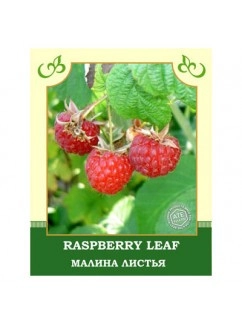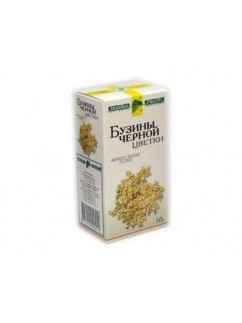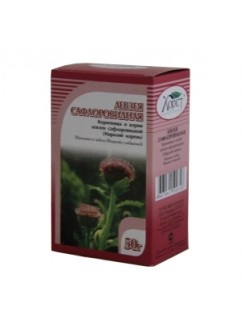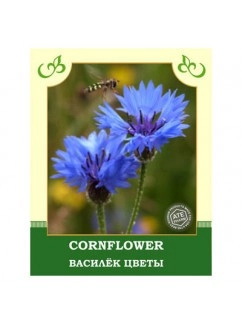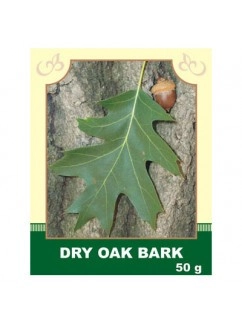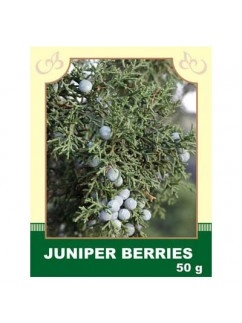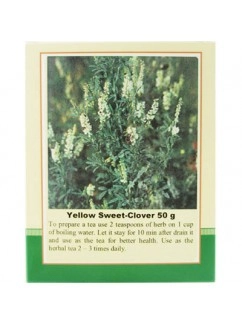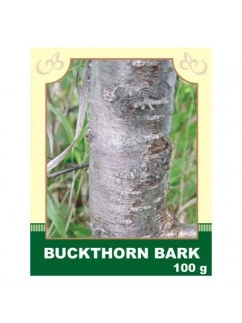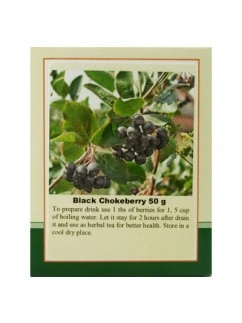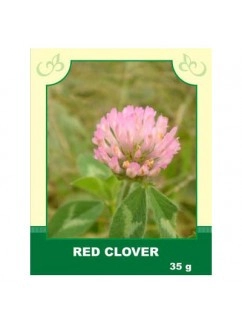Dry Herbs & Berries
Internally, the infusion of the leaves is taken for the following conditions:
- Respiratory organ diseases;
- Cough and feverish conditions;
- Diarrhea;
- Enterocolitis;
- Gastric bleeding;
- Hemorrhoids;
- Abundant menstruation.
Method of application and dosage: Steep 2 tablespoons of dried leaves in 500 ml of boiling water, infuse for 2 hours. Take 1/2 cup 4 times a day before meals.
Externally, the leaves are used:
- For rinsing in stomatitis, pharyngitis, and angina;
- For compresses and moistening the body surface in skin diseases.
Contraindications: Individual intolerance.
$5.99- Diaphoretic for colds, they rinse their mouth and throat when laryngitises and angina. Has a tonic, diaphoretic, expectorant, laxative, diuretic effect. Used for rheumatism. Unripe fruit of elderberry are poisonous, they act as a strong diuretic and laxative and contain prussic acid, ripe - completely safe and edible.$9.49
- Popular names for Linden are Tilia and Lime. Lime flowers are a popular domestic help for a number of ailments, especially in the treatment of colds and other ailments where sweating is desirable. Active ingredients in the lime flowers include flavonoids (which act as antioxidants), volatile oils, and mucilaginous constituents (which soothe and reduce inflammation). The plant also contains tannins that can act as an astringent. The flowers were added to baths to quell hysteria, and steeped as a tea to relieve anxiety-related indigestion, irregular heartbeat, and vomiting. Tilia flowers are used in colds, cough, fever, infections, inflammation, high blood pressure, headache (particularly migraine), as a diuretic, antispasmodic (reduces smooth muscle spasm along the digestive tract) and sedative.$8.99
Internally, the infusion is used for colds, cough, constipation, stomach pains, kidney and bladder diseases, as a diaphoretic, and as a remedy for palpitations and headaches.
Method of application and dosage: Infuse 1 teaspoon of violet for 1 hour in closed dishes in 1 glass of boiling water, cool, strain. Take 1/2 cup 3 times a day 15-20 minutes before meals.
Externally, the infusion of flower petals is used as eye drops and compresses for certain eye diseases. Crushed plant material is applied to wounds to promote healing.
Contraindications: Individual intolerance. The plant is weakly toxic, so caution should be exercised with dosage.
$6.99
Description. Oak bark is widely used as an effective astringent. Oak bark is rich in galic and ellgalic acids, quertecin, flobaphen, pictines and tannins. Tannins are thought to have an astringent action, meaning that they reduce tissue swelling and stop bleeding, and they are traditionally thought to be useful for diarrhea. It has antiphlogistic, haemostatic, and antiseptic properties. Oak bark is often used topically for various skin disorders. Use. Currently herbalists recommend oak bark internally for treatment of diarrhea, gastric and intestinal bleeding; and topically for sore throat, mouth sores, hemorrhoids, and eczema, burns, acne, hemorrhoids and bedsores. An important healing component in the smooth bark of the oak tree is its tannin, which has astringent and mildly antiseptic qualities. The tannin is what makes oak bark valuable for minor wounds and inflammation, for tightening tissue and lessening oozing. Oak Bark water infusion is an effective wash for uro-genital diorders.
Attention! Before using any herbal products, make sure that you have full knowledge of how the herb works and any adverse reaction it may cause.$6.99Internal use:
Take it internally for bronchitis, tracheitis, laryngitis; neuralgia, rheumatism, gout; gastroenteritis; chronic pyelitis, cystitis, and in the treatment of gallstone disease.
Application and dosage: Pour 1 tablespoon of dried fruits with 200 ml of boiling water, boil in a water bath for 15 minutes. Infuse for 45 minutes at room temperature, strain, squeezing out the remaining raw material. The finished infusion is brought to the original volume with boiled water and taken 1 tablespoon 3-4 times a day after meals.
External use:
Externally used in gynecology for douching with colpitis and bacterial vaginosis in women, as well as in the form of baths for the treatment of neuralgia, rheumatism, gout, scabies, and eczema. For baths: pour 100-200 g of dried fruits or young shoots with 1 liter of water, boil for 5 minutes, infuse until cooled, strain, and pour into the bath. For douching: pour 20 g of dried fruits with 1 liter of boiling water, boil for 5 minutes, strain, cool, and use as directed.
Contraindications: Individual intolerance, in case of acute kidney inflammation, and during pregnancy. Consult a specialist before use.
$6.99- It helps promote lymphatic drainage and reduces fluid retention, particularly in the tissues of the vein wall.$6.99
Internally, it is used for habitual constipation, spastic colitis, hemorrhoids, and anal fissures, especially during pregnancy.
Method of application and dosage: Pour 2 tablespoons of raw material into 200 ml of boiling water, heat on a water bath for 30 minutes, infuse for 10 minutes at room temperature, strain, squeezing the vegetable raw material. Bring the resulting infusion to the original volume. Take 1/2 cup orally at night.
Externally, a strong decoction of the cherry bark is used in the treatment of scabies, especially in children.
Contraindications: individual intolerance, in case of severe kidney dysfunction, and inflammatory processes in the intestines. Prolonged use may lead to habituation.
$6.99Internally: Blackcurrant enhances immunity, has a general strengthening effect, helps strengthen blood vessel walls, increases their elasticity and firmness; has a favorable effect on the endocrine system; contributes to lowering blood pressure and blood sugar levels.
Method of application and dosage: In 1 liter of boiling water, add 100 g of dried berries and simmer for 10 minutes. Remove from heat, cover with a lid, infuse for 20 minutes. Squeeze through cheesecloth. Drink 3 times a day, half a glass each time. For colds, take 3 tablespoons of dried berries, pour boiling water (1 liter), infuse for 3 hours. Strain, pour into a glass, mix with a tablespoon of honey. Drink throughout the day.
Contraindications: In case of frequent constipation, peptic ulcer disease, gastritis with high acidity, hypotension, thrombophlebitis, and increased blood clotting.
$6.99
Description.Today, however, it's highly recommended as one of the herbs of choice when it comes to cleansing/detox programs, due to its gentle yet thorough cleansing action and its ability to quickly flush toxins from the body. The nutritious Red Clover blossoms also boast a wide array of nutrients including, calcium, magnesium, molybdenum, zinc, and vitamin c, to name just a few. All these serve to support immune health, promote healthy skin, and acts as a revitalizing herbal tonic to boost overall health & vitality. Promotes healthy blood & lymphatic system; supports healthy liver function; supports healthy estrogen levels (menopausal health); supports immune system; herbal tonic; gentle diuretic; respiratory health. Use. Several studies of a proprietary extract of red clover isoflavones suggest that it may significantly reduce hot flashes in menopausal women. The largest study, however, showed no such effect. Menopause increases a woman's risk for developing osteoporosis (significant bone loss). Some studies suggest that a proprietary extract of red clover isoflavones may slow bone loss and even boost bone mineral density in pre- and perimenopausal women, but the evidence is preliminary. Traditionally, red clover ointments have been applied to the skin to treat psoriasis, eczema, and other rashes. Red clover also has a history of use as a cough remedy for children. It has also been reported that red clover can be used for therapeutic purposes for coughs, bronchitis, eczema, sores, eyes inflammations, scrofula and can be gargled for mouth ulcers and sore throats.
Attention! Before using any herbal products, make sure that you have full knowledge of how the herb works and any adverse reaction it may cause.$6.99
If you like to use a lot of dry herbs and berries to create teas, wellness pads and an assortment of other items for well-being, our dry herbs and berries can provide you with a quick way to do it on your own. Each packet contains the herbs or berries of your choice that were freshly grown, chopped up and dried to perfection. Every herb and berries packet is 100% natural, with no artificial preservatives or added fillers. You're able to create a tasty blend with all that is provided from our large selection.


